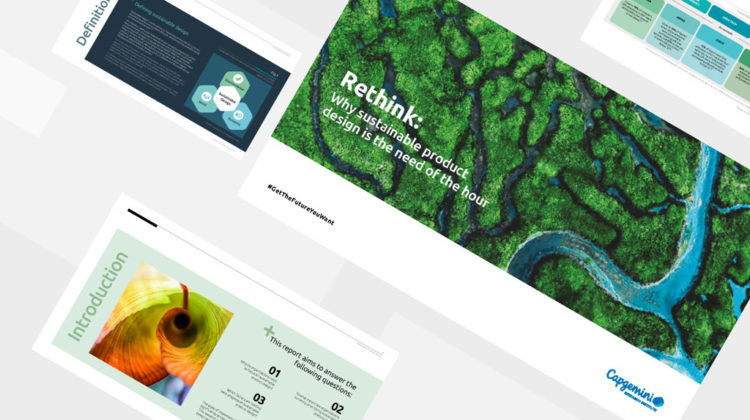
The implementation of sustainable product design strategies has seen some 67 per cent of organisations experience a reduction in carbon emissions, while 73 per cent have seen an improvement in revenue growth, according to a new report by the Capgemini Research Institute (CRI), the in-house think tank of Paris-based multinational information technology services and consulting company Capgemini. The research points to a critical need to step up action by making sustainability a core strategic priority for product design teams, the report says.
In order to compile the report,‘Rethink: Why sustainable product design is the need of the hour’, in April–May 2022, the CRI surveyed 900 senior product design and engineering executives from large organisations across industries, including consumer products, automotive, industrial manufacturing, aerospace and defence, high-tech and medical devices; 15 senior industry executives and academics were also interviewed. The report focused on organisations that principally manufacture physical products, but because some of these products incorporate software elements or have accompanying apps, sustainable product design strategies for digital products were also covered.
Design decisions have a profound impact on the environmental and social consequences of products; according to the report, some 80 per cent of the environmental impact of products can be attributed to decisions made at the design stage. Crucially, sustainable product design is a key lever that can help organisations make the transition to net zero. Product emissions can account for a major share of organisations’ overall emissions and sustainable design strategies are vital to mitigate them. Yet, according to the report, just 22 per cent of organisations have made sustainability a primary component of product design, and only around a quarter of organisations conduct regular environmental-impact (26 per cent) and social-impact (25 per cent) assessments when creating new products.
‘In order to reach their carbon-reduction targets and deliver on overall sustainable-development goals, organisations need to think beyond isolated design problems and consider the system as a whole, from the early stages of product design to selection of materials and end-of-life management. This necessitates a series of different approaches across the entire product lifecycle, including systems thinking, circular design thinking and regenerative approaches,’ said Roshan Gya, global head of intelligent industry at Capgemini. ‘Organisations must also keep in mind that many sustainability initiatives are characterised by short-term pain followed by long-term gain, such as up-front investments to avoid larger costs in the future.’
The top motivator for 61 per cent of the organisations currently adopting sustainable product design practices or planning to do so in the future is pressure from regulators, the report says. With regulation set to tighten in the future, including around product life extension and recycled materials used in products and or packaging, businesses that aren’t already implementing sustainable design must reconsider in order to safeguard themselves from the risk of future regulatory non-compliance.
Sustainable design is often thought to be too expensive, creating a major roadblock for implementation. However, the CRI found that, across all sectors, 23 per cent of businesses that have implemented at least one sustainable design strategy have experienced a decrease in costs, while 37 per cent of organisations say that costs have remained the same.
According to the report, organisations must view investments in sustainable product design through a long-term lens. For many businesses, these investments are already paying off; of those organisations that reported an increase in costs, 51 per cent say that it has been outweighed by an increase in benefits. Organisations have experienced increased revenue growth (73 per cent), improved customer satisfaction (70 per cent) and improved employee engagement (79 per cent) alongside carbon-emissions reduction (67 per cent).
Sustainable design also offers cost-reduction opportunities across the value chain through strategies such as ‘dematerialisation’ and ‘lightweighting’, which aim to reduce the amount of materials used within a product. Other benefits include increased manufacturing efficiency, for example by lowering energy and water consumption, and reducing assembly time; and lower transportation costs with optimised product and packaging design.
The report concludes by highlighting the fact that in order to reap the benefits, businesses must make sustainability a core design priority and emphasise the need for systems change. Adopting a data-driven approach is critical and organisations must assess product impacts holistically – measuring environmental and social impacts across the product lifecycle. They must also collaborate with stakeholders across the value chain to jointly determine sustainable design decisions, based on impact and feasibility, and invest in partnerships to build new competencies. Investment is also needed in services to facilitate product life extension and end-of-life management, close the loop of product and material flows and ensure that products are truly sustainable throughout their lifecycle. Additionally, advances in technology are opening up numerous opportunities for sustainable product design and organisations must ensure that they utilise technology more efficiently and extensively to support their sustainable product design initiatives.
The report can be downloaded here.



